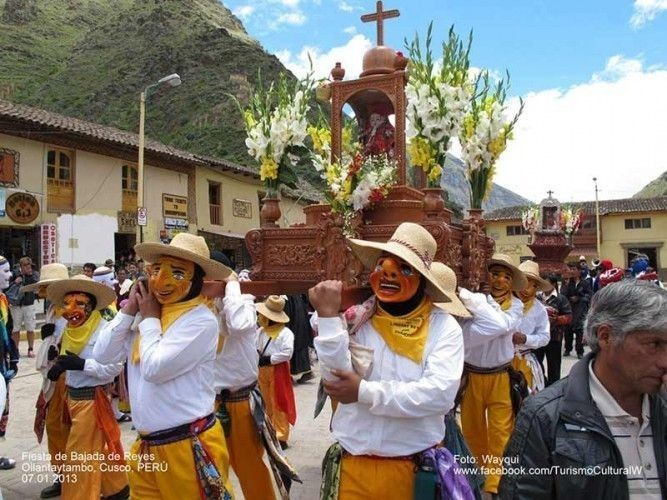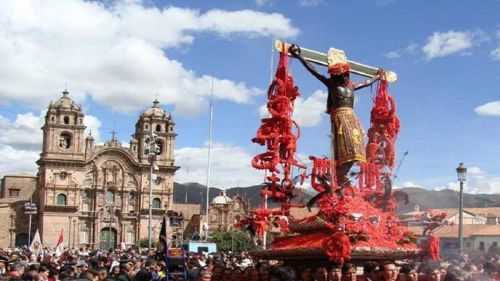Every year on January 6 Peruvians, just as many other Christians, commemorate the arrival of the Three Wise Men or Three Kings at Jesus’ manger bearing gifts of gold, frankincense and myrrh.
But as so often in Peru those kinds of celebrations are not only about the Catholic customs and rituals brought to the country by the Spanish conquerors nearly 500 years ago, but as well include ancient indigenous traditions and rites.
In the Andes, where the “Bajada de los Reyes” is widely celebrated, January marks the height of the rainy season which brings water essential for growing crops and a good harvest. Ancient Peruvians celebrated the rain with many festivities, which later merged with the Spanish celebrations for “Dia de los Reyes Magos”.
Today the most spectacular celebration can be found in Ollantaytambo in the Sacred Valley. Already on January 5, El Niño Jesús de Marcacocha (the baby Jesus of Marcacocha) is brought from the valley of Patakancha to Ollantaytambo in a huge, colorful procession, with locals from the surrounding highlands joining the festivities in traditional costumes.
The beginning of the official festivities, which might be best described as a mixture of traditional folk festival and serious religious ceremonies, is marked by the arrival at the main plaza in Ollantaytambo in the late afternoon and celebrations continue throughout the night.
On January 6, the principal day of the festivities, the morning starts with a traditional mass. Then the images of El Niño Jesús de Marcacocha and other Christ Children are walked around town in a large procession. The day is full of traditional and folkloric music and dancing on the main plaza and on the streets around town and lots of local food and drinks. In the afternoon a bullfight takes place near the ruins of Ollantaytambo.
Festivities continue until January 8, but on a much smaller scale.
In Lima, the festivities are much smaller and less enthusiastic. Usually three police officers, dressed as the Three Kings, ride on horses to the Nativity scene at Lima’s main plaza, bringing the Christ Child symbolic gifts. A special mass is celebrated in Lima’s Cathedral and at the end of the day small celebrations surrounding the removal of the Nativity scene take place.





























